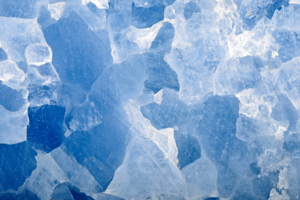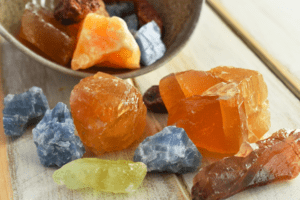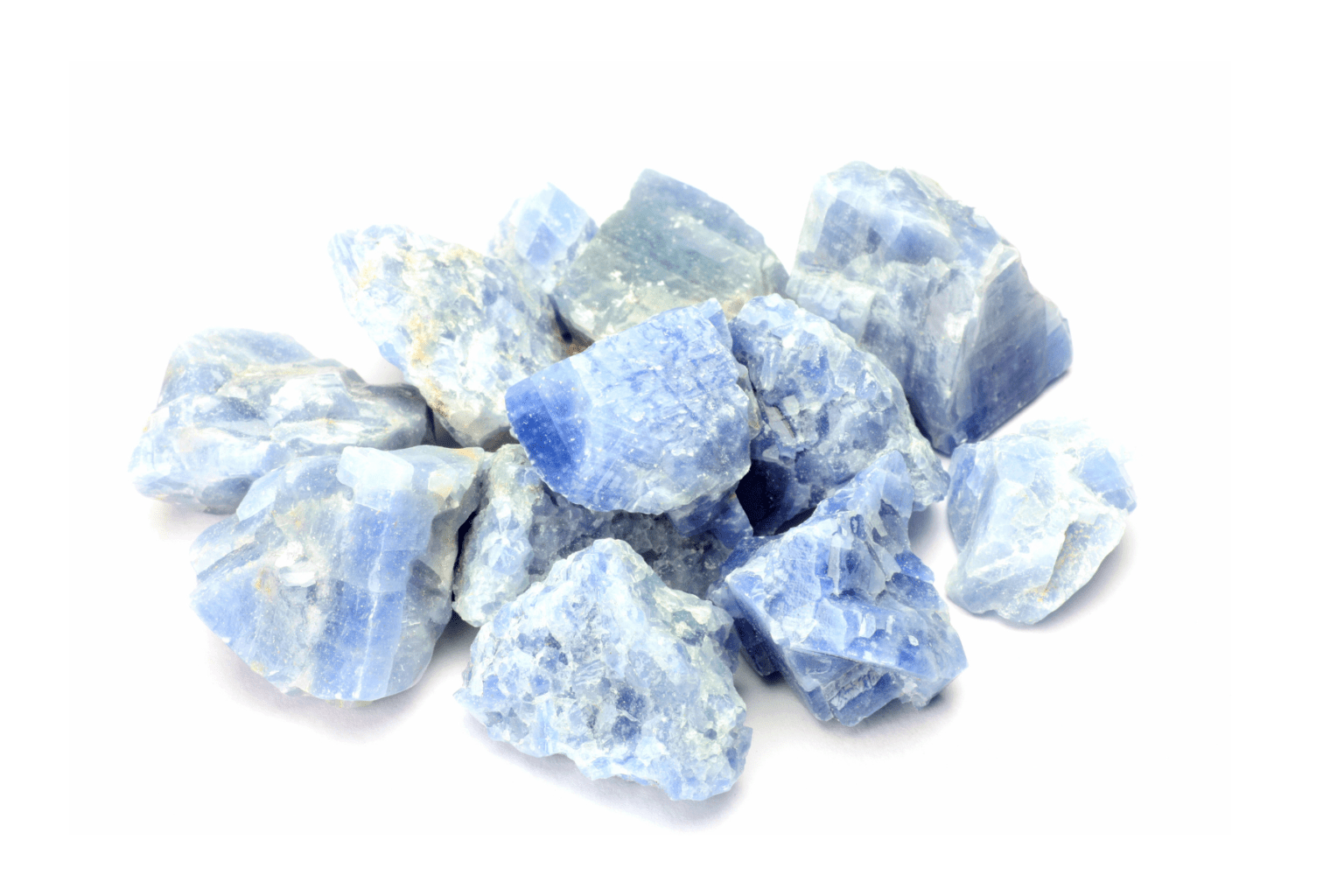What is calcite?
Calcite is a mineral that belongs to the carbonate group of minerals. It is a very common mineral and can be found in many different geological settings. Calcite has a chemical formula of CaCO3, which means that it is composed of calcium, carbon, and oxygen atoms.
Calcite is typically found in sedimentary rocks such as limestone, marble, and chalk. It can also be found in metamorphic rocks, such as marble and schist, and in hydrothermal veins.
Calcite has a variety of uses in industry and everyday life. It is commonly used in the manufacture of cement and in the production of lime, which is used in steelmaking, water treatment, and other industrial processes. Calcite is also used as a flux in the production of glass, and as a filler and coating pigment in the manufacture of paints, plastics, and paper.
In addition to its industrial uses, calcite is also prized by collectors and used in jewelry-making. It is a relatively soft mineral, with a hardness of 3 on the Mohs scale, which makes it easy to carve and shape into decorative objects.
How is calcite formed?
Calcite can form in a variety of ways, depending on the geological setting. The most common way calcite forms is through precipitation from solution. This occurs when calcium-rich groundwater percolates through limestone or other calcium-rich rocks and dissolves some of the calcium carbonate. When the groundwater reaches an area of lower pressure, such as a cave or a fracture in the rock, the calcium carbonate can precipitate out of solution and form calcite crystals.
Calcite can also form through biogenic processes, such as the accumulation of shells and other hard parts of marine organisms. When these organic materials accumulate on the ocean floor, they can become buried and compressed, eventually forming limestone or other calcium-rich sedimentary rocks.
Another way calcite can form is through metamorphism. When limestone or other calcium-rich rocks are subjected to high temperatures and pressures, the calcium carbonate can recrystallize and form calcite.
Finally, calcite can also form through hydrothermal processes. This occurs when hot, mineral-rich fluids circulate through fractures in rocks and deposit minerals, including calcite, as they cool and react with the surrounding rock.
Overall, calcite can form through a variety of geological processes, and its formation is often closely tied to the surrounding geological setting and the availability of calcium-rich materials.
Calcite’s Looks
Calcite can have a variety of different appearances depending on the specific crystal form and any impurities present. However, there are some general characteristics of calcite that can help identify it.
Calcite typically has a vitreous or pearly luster and a hardness of 3 on the Mohs scale, which means it is relatively soft and can be scratched with a fingernail. It has a white streak and is transparent to translucent in thin sections.
In terms of color, calcite can be colorless, white, gray, yellow, orange, red, green, blue, or brown. The color can be uniform throughout the crystal or can be zoned, meaning that different parts of the crystal have different colors.
Calcite crystals are usually rhombohedral in shape, which means they have six sides and angles that are not all equal. However, they can also occur in other crystal forms such as scalenohedrons or prisms. Calcite crystals can be quite large in some cases, with some specimens reaching several feet in length.
When viewed under polarized light, calcite exhibits a property called birefringence, which means that it splits light into two rays and produces a characteristic pattern of interference colors. This property is useful for identifying calcite and distinguishing it from other minerals
What chakra is associated to each color?
In the practice of crystal healing and chakra balancing, different colors of calcite are thought to be associated with different chakras. Here are some common associations:
- Clear or white calcite: Associated with the crown chakra, which is located at the top of the head and is related to spirituality, enlightenment, and connection to higher consciousness.
- Orange calcite: Associated with the sacral chakra, which is located in the lower abdomen and is related to creativity, passion, and sexuality.
- Yellow calcite: Associated with the solar plexus chakra, which is located in the upper abdomen and is related to personal power, confidence, and self-esteem.
- Green calcite: Associated with the heart chakra, which is located in the center of the chest and is related to love, compassion, and emotional healing.
- Blue calcite: Associated with the throat chakra, which is located in the throat and is related to communication, self-expression, and speaking one’s truth.
- Red calcite: Associated with the root chakra, which is located at the base of the spine and is related to grounding, survival, and physical health.
Cleansing Calcite
Calcite can be cleansed using a variety of methods, depending on personal preference and the specific use of the crystal. Here are some common methods for cleansing calcite:
- Running water: Holding calcite under running water can help to clear any negative or stagnant energy from the crystal. Make sure to use lukewarm or cool water rather than hot water, as extreme temperatures can damage some types of calcite.
- Sunlight or moonlight: Placing calcite in direct sunlight or moonlight for several hours can help to recharge and revitalize the crystal. However, be careful not to leave calcite in direct sunlight for extended periods of time, as it can cause some colors to fade or become dull.
- Smudging: Burning sage or other herbs and passing the calcite through the smoke can help to purify and cleanse the crystal. Be sure to use a heat-proof container and to keep the sage or herbs away from the calcite to avoid damaging the crystal.
- Salt water: Soaking calcite in a bowl of salt water can help to remove any negative or stagnant energy. However, be careful not to soak calcite for too long, as it can damage the crystal.
- Sound cleansing: Using sound, such as a singing bowl or chimes, can help to clear and balance the energy of calcite. Simply hold the calcite near the sound source and allow the vibrations to flow through the crystal.
It’s important to note that some types of calcite may be sensitive to certain cleansing methods, so it’s always a good idea to research the specific type of calcite before cleansing it. Additionally, it’s important to cleanse and charge calcite regularly to maintain its positive energy and benefits.
Calcite Care
Certainly, here are some tips on how to take care of calcite:
- Avoid exposure to heat: Calcite is sensitive to heat and can be damaged by exposure to high temperatures. Be sure to keep calcite away from direct sunlight or sources of heat, such as radiators or fireplaces.
- Protect from scratches: Calcite has a hardness of 3 on the Mohs scale, which means it is relatively soft and can be scratched easily. Be sure to store calcite separately from other crystals or objects that may scratch or damage it.
- Clean regularly: To maintain the energetic properties and appearance of calcite, it is important to clean it regularly using one of the methods outlined above. Be sure to research the specific type of calcite before using any cleansing method, as some types may be sensitive to certain cleaning agents or temperatures.
- Store properly: When not in use, store calcite in a cool, dry place, such as a jewelry box or a cloth bag. Avoid storing calcite in areas with high humidity or moisture, as this can cause the crystal to deteriorate over time.
- Handle with care: When handling calcite, be gentle and avoid dropping or hitting it against hard surfaces. This can cause the crystal to crack or break, which can affect its energetic properties and appearance.
By following these tips, you can help to maintain the energetic properties and appearance of calcite for years to come.
 Harnessing the Energy of Calcite
Harnessing the Energy of Calcite
The energy of calcite can be harnessed in a variety of ways, depending on personal preference and the specific use of the crystal. Here are some common methods for working with calcite:
- Meditation: Holding or placing calcite on the body during meditation can help to amplify and balance the energy of the chakras. Simply sit or lie down in a comfortable position, hold the calcite in your hand or place it on a specific chakra, and focus on your breath.
- Crystal grids: Creating a crystal grid with calcite and other crystals can help to amplify and focus their collective energy. Choose a specific intention, such as abundance or healing, and arrange the crystals in a geometric pattern.
- Feng shui: Placing calcite in specific areas of the home or workplace can help to promote positive energy flow and balance. For example, placing yellow calcite in the prosperity corner of the home can help to attract abundance and wealth.
- Jewelry: Wearing calcite in the form of jewelry, such as a pendant or bracelet, can help to carry its energy with you throughout the day. Choose a specific color of calcite that resonates with your intentions or chakra needs.
- Healing: Placing calcite on specific areas of the body, such as the heart or solar plexus chakra, can help to promote emotional healing and balance. Be sure to research the specific properties of the type of calcite you are using to ensure safe and effective use.
Summary
Calcite is a mineral that belongs to the carbonate group of minerals and is composed of calcium, carbon, and oxygen atoms. It is commonly found in sedimentary rocks and has a variety of uses in industry and everyday life. Calcite can form through precipitation, biogenic processes, metamorphism, and hydrothermal processes. The appearance of calcite can vary depending on the crystal form and any impurities present. In crystal healing and chakra balancing, different colors of calcite are associated with different chakras. Calcite can be cleansed and its energy harnessed through a variety of methods, such as meditation, crystal grids, and feng shui. To take care of calcite, avoid exposure to heat, protect from scratches, clean regularly, store properly, and handle with care.

